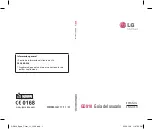
The OK key is used to confirm and save inputs. From the Idle menu, pressing twice
opens the phone book.
You can use the hold for enquiry key to go from a call to hold for enquiry. Pressing the
key again cuts off the hold for enquiry and you are reconnected to the person you were
speaking to.
Use the Home key to go back to the Idle menu. When idle, the device info is displayed.
When the receiver is hung up: Use the Redial Last Number key to dial the last number di-
alled again.
When the receiver is off the hook: Use the Redial Last Number key to display the last 30
numbers dialled.
Use the Mail key to query the system's voicebox. When the key's blue LED flashes, it
means there are new messages.
The Headset key is used to switch the headset on and off.
These keys are used to adjust the volume and the display.
The Loudspeaker key is used to switch the hands free or loudspeaker on and off.
Display
Cursor characters: Use the Navigator keys to, e. g., edit text. The cursor is always posi-
tioned to the right of the character to be edited.
This sign in front of a name or number indicates the number (MSN) to which the call has
been made, as multiple numbers can be entered for each system telephone.
This symbol indicates a forwarded call.
If you see symbol in front of a display row, there are one or more submenus or informa-
tion items. You can open these menus with the »Right« Navigator or the OK key. (The
first symbol applies to the S560, the second symbol to the S530)
This symbol in front of the system telephone name indicates that your number cannot be
seen by the person you have called. (The first symbol applies to the S560, the second
symbol to the S530)
This symbol indicates that automatic callback is activated.
8.3 Key functions
8 System telephone display and keys
bintec elmeg GmbH
18
System telephones elmeg S560 / elmeg S530
















































